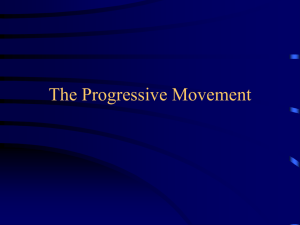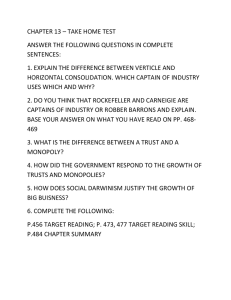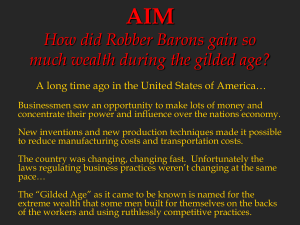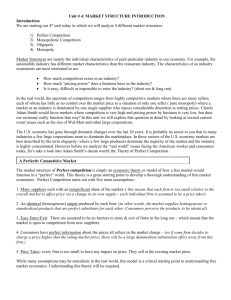PrepUS History
advertisement
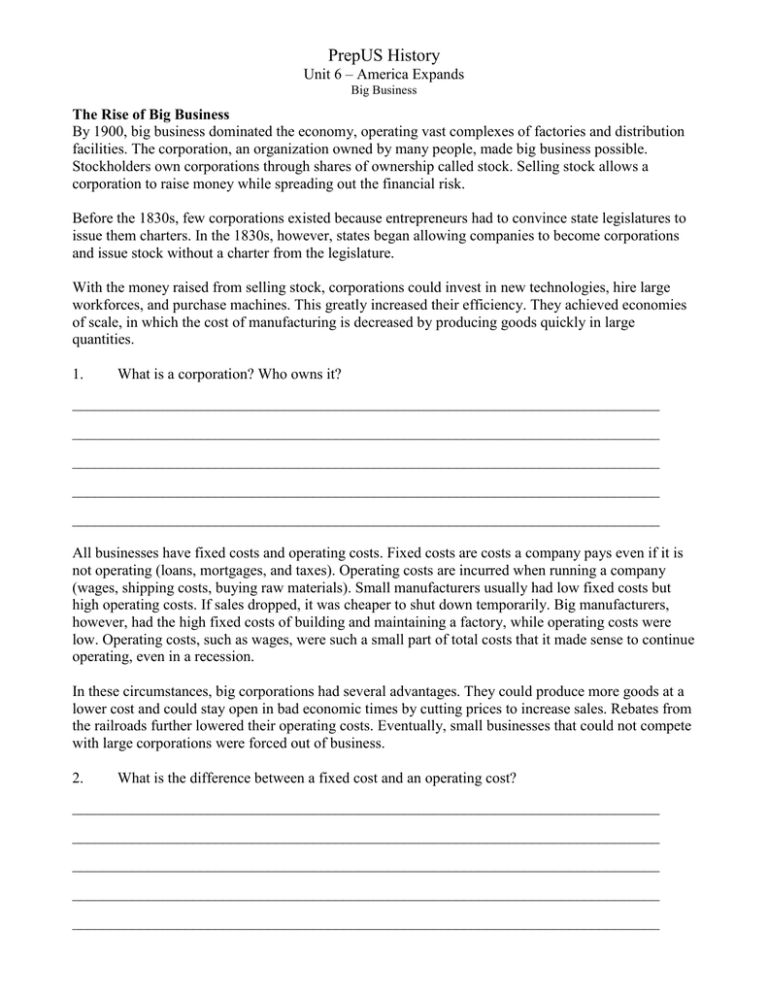
PrepUS History Unit 6 – America Expands Big Business The Rise of Big Business By 1900, big business dominated the economy, operating vast complexes of factories and distribution facilities. The corporation, an organization owned by many people, made big business possible. Stockholders own corporations through shares of ownership called stock. Selling stock allows a corporation to raise money while spreading out the financial risk. Before the 1830s, few corporations existed because entrepreneurs had to convince state legislatures to issue them charters. In the 1830s, however, states began allowing companies to become corporations and issue stock without a charter from the legislature. With the money raised from selling stock, corporations could invest in new technologies, hire large workforces, and purchase machines. This greatly increased their efficiency. They achieved economies of scale, in which the cost of manufacturing is decreased by producing goods quickly in large quantities. 1. What is a corporation? Who owns it? ______________________________________________________________________________ ______________________________________________________________________________ ______________________________________________________________________________ ______________________________________________________________________________ ______________________________________________________________________________ All businesses have fixed costs and operating costs. Fixed costs are costs a company pays even if it is not operating (loans, mortgages, and taxes). Operating costs are incurred when running a company (wages, shipping costs, buying raw materials). Small manufacturers usually had low fixed costs but high operating costs. If sales dropped, it was cheaper to shut down temporarily. Big manufacturers, however, had the high fixed costs of building and maintaining a factory, while operating costs were low. Operating costs, such as wages, were such a small part of total costs that it made sense to continue operating, even in a recession. In these circumstances, big corporations had several advantages. They could produce more goods at a lower cost and could stay open in bad economic times by cutting prices to increase sales. Rebates from the railroads further lowered their operating costs. Eventually, small businesses that could not compete with large corporations were forced out of business. 2. What is the difference between a fixed cost and an operating cost? ______________________________________________________________________________ ______________________________________________________________________________ ______________________________________________________________________________ ______________________________________________________________________________ ______________________________________________________________________________ Consolidating Industry Falling prices benefited consumers but cut into manufacturers’ profits. Many companies organized pools or other arrangements to keep prices at a certain level. Pools interfered with competition and property rights. Companies that formed pools had no legal protection and could not enforce their agreements in court. Pools generally did not last long, as one member inevitably cut prices to steal market share from the others. Vertical integration is the process in which a company buys out its suppliers. Andrew Carnegie used vertical integration in the steel industry. Instead of paying companies for coal, lime, and iron, Carnegie’s steel company bought coal mines, limestone quarries, and iron ore fields. Vertical integration saved money and enabled many companies to expand. 3. What benefits would a company gain from vertical integration? ______________________________________________________________________________ ______________________________________________________________________________ ______________________________________________________________________________ ______________________________________________________________________________ ______________________________________________________________________________ Horizontal integration is the process in which companies producing similar products merge. John D. Rockefeller’s Standard Oil began buying out competitors. By 1880, it controlled about 90% of the U.S. oil refining industry, a near monopoly (a monopoly is the complete control over an industry’s production, wages, and prices). Rockefeller was so successful that the New York Times declared that he “had accumulated close to $1,500,000,000 . . . probably the greatest amount of wealth that any private citizen had ever been able to accumulate by his own efforts.” 4. What benefits would a company gain from horizontal consolidation? ______________________________________________________________________________ ______________________________________________________________________________ ______________________________________________________________________________ ______________________________________________________________________________ ______________________________________________________________________________ 5. What is a monopoly? ______________________________________________________________________________ ______________________________________________________________________________ ______________________________________________________________________________ ______________________________________________________________________________ ______________________________________________________________________________ 2 New Business Organizations Many Americans feared monopolies. They believed that a monopoly could charge whatever it wanted for its products. In the late 1800s, many states tried to stop horizontal integration and the rise of monopolies by making it illegal for one company to own stock in another company. Companies, however, soon discovered ways around the laws. 6. What makes monopolies disadvantageous for the consumer? ______________________________________________________________________________ ______________________________________________________________________________ ______________________________________________________________________________ ______________________________________________________________________________ ______________________________________________________________________________ Trusts In 1882 Standard Oil formed the first trust. A trust is a legal arrangement that allows one person to manage another person’s property. The person who manages that property is called a trustee. Instead of buying a company outright, Standard Oil had stockholders of that company give their stock to Standard Oil trustees in exchange for shares in the trust and its profits. The trustees could control a group of companies as if they were one large, merged company. Holding Companies A new general incorporation law in 1889 allowed corporations to own stock in other businesses without special legislative permission. Many companies used the law to create holding companies. A holding company does not produce anything itself but owns the stock of companies that do produce goods. The holding company manages its companies, effectively merging them into one. 7. What is the main difference between a trust and a holding company? ______________________________________________________________________________ ______________________________________________________________________________ ______________________________________________________________________________ ______________________________________________________________________________ ______________________________________________________________________________ 3
